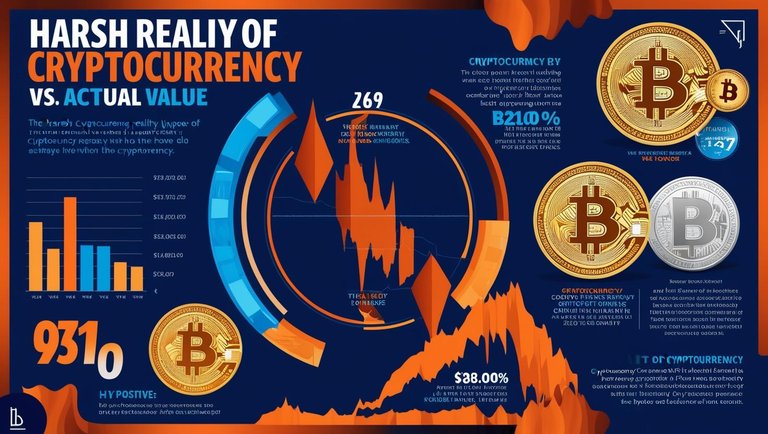After a stressful day at work, I found myself contemplating what to write for my daily blog. I was already exhausted and thought I might not be able to write anything. My students had taken up a significant portion of my time today as I had to mark about 600 notes. I needed to complete this task since we are approaching the midterm break, and parents need to see how their children are performing. This also gives parents the opportunity to address issues with students who have failed to update their notes or complete their assignments.
By the time I was done marking the notes, the school day had ended, and I was so tired that I immediately took a nap.
When I woke up, I started scrolling through the internet and stumbled upon an intriguing topic: The Illusion of Crypto Value. We all know how volatile cryptocurrency is; it’s possible to become a millionaire in the morning and lose almost everything by evening. However, this doesn’t mean cryptocurrency is inherently bad. Many people testify to the opportunities and financial blessings it has brought them.

The real issue with cryptocurrency these days is the proliferation of so-called “shitcoins.” Before 2021, the number of coins listed on CoinMarketCap was fewer than a thousand. Now, the market is flooded with a staggering number of cryptocurrencies, many of which lack real value. A large portion of these coins are scams designed to exploit unsuspecting investors.
In truth, most cryptocurrencies lack intrinsic value because they aren’t backed by tangible assets. This aligns with Warren Buffett’s perspective, as he believes that true value comes from what an asset produces, not simply what people are willing to pay for it. Cryptocurrencies seem to operate on the latter principle since they are not tied to physical assets.
The harsh reality is that cryptocurrency, unlike businesses or real estate, does not produce anything tangible. Businesses generate profits, and real estate provides shelter, but Bitcoin and altcoins exist purely on speculation. However, I could be wrong about this.
Another important distinction to make is between price and value. Just because something is expensive doesn’t mean it’s valuable. History has seen its share of financial bubbles—Tulip Mania, the Dot-com crash, and the 2008 housing crisis.
Cryptocurrency’s rise has been largely fueled by hype, social media trends, and the fear of missing out (FOMO). But what happens when the hype fades?
The long-term sustainability of cryptocurrency remains a concern. Warren Buffett built his fortune on assets with real cash flow—companies like Coca-Cola, Apple, and American Express. These businesses create products, employ people, and generate wealth over time. Cryptocurrency, on the other hand, often feels like a speculative bet, reliant on future buyers willing to pay more. When the excitement dies down, who will be left holding the bag?
It’s crucial to approach cryptocurrency investments cautiously and think twice before investing in any coin that lacks a strong, supportive community.